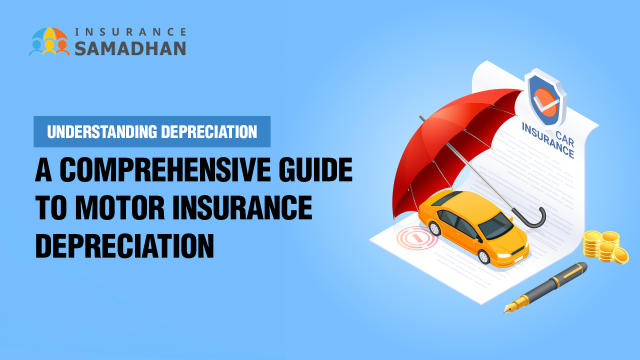Motor insurance is a vital aspect of owning and driving a vehicle. It not only ensures legal compliance but also provides financial protection in case of accidents, theft, or damages. In this comprehensive guide, we will explore the various aspects of motor insurance, helping you make informed decisions about your coverage.
What is Motor Insurance?
Motor insurance is a contract between a vehicle owner and an insurance company. The insurer provides financial coverage for damages or losses involving the insured vehicle in exchange for periodic premium payments. It is a mandatory requirement in many countries to drive legally.
Types of Motor Insurance
1. Third-Party Liability Insurance
Third-party insurance covers damages or injuries caused to a third party, including their property, by your vehicle. This is the most basic form of motor insurance and is often legally required.
2. Comprehensive Insurance
Comprehensive insurance provides extensive coverage. It includes third-party liability as well as damages to your own vehicle caused by accidents, theft, fire, natural disasters, or vandalism.
3. Personal Accident Cover
This covers medical expenses or compensation in case of injury or death of the policyholder due to an accident involving the insured vehicle.
4. Add-On Covers
These are additional coverages you can include in your policy for a higher premium. Common add-ons include:
- Zero Depreciation Cover: Ensures full claim without considering depreciation.
- Roadside Assistance: Provides help in case of vehicle breakdowns.
- Engine Protection Cover: Covers engine damage due to waterlogging or other reasons.
- Return to Invoice: Compensates the full invoice value of the car in case of theft or total loss.
Why is Motor Insurance Important?
- Legal Compliance Most countries require at least third-party liability insurance to drive legally.
- Financial Protection Motor insurance minimizes financial burden by covering repair costs or compensation claims.
- Peace of Mind With comprehensive coverage, you can drive without constant worry about unforeseen accidents or damages.
- Protection Against Lawsuits Third-party liability insurance shields you from potential legal claims by third parties.
Factors Affecting Motor Insurance Premiums
- Type of Vehicle Premium rates vary depending on the make, model, and value of the vehicle.
- Age of the Vehicle Older vehicles usually attract lower premiums but may have limited coverage options.
- Driving History A clean driving record can lead to lower premiums, while accidents or traffic violations may increase them.
- Location Vehicles used in high-risk areas (e.g., theft-prone or accident-prone zones) may have higher premiums.
- Policy Coverage Comprehensive policies with add-ons are costlier than basic third-party insurance.
- No Claim Bonus (NCB) Policyholders who do not make claims in a policy year are rewarded with discounts on premiums.
How to Choose the Right Motor Insurance Policy?
- Assess Your Needs Understand your driving habits, vehicle value, and risk factors to decide on the level of coverage.
- Compare Policies Use online tools to compare premiums, coverage, and add-ons offered by different insurers.
- Check the Insurer’s Reputation Look for reviews, claim settlement ratios, and customer service ratings.
- Read the Fine Print Understand policy exclusions, claim processes, and terms before purchasing.
- Opt for Useful Add-Ons Choose add-ons that cater to your specific needs, such as zero depreciation or engine protection.
Common Exclusions in Motor Insurance
- Wear and Tear Normal wear and tear or aging of the vehicle are not covered.
- Drunk Driving Claims arising from accidents caused under the influence of alcohol or drugs are rejected.
- Unauthorized Use Using the vehicle for illegal activities or racing is not covered.
- Uninsured Drivers If someone without a valid license drives your car, claims will be denied.
- Exceeding Policy Limits Damages exceeding the policy’s coverage amount are not reimbursed.
How to File a Motor Insurance Claim?
- Inform the Insurer Notify your insurance company immediately after an accident or damage.
- Document the Incident Collect evidence such as photographs, videos, and witness statements.
- Submit Required Documents Provide necessary documents like the policy copy, claim form, driving license, and FIR (if applicable).
- Survey and Approval An insurance surveyor will assess the damage and approve the claim.
- Repair and Settlement Once approved, repairs can be done at a network garage, and the insurer will settle the claim.
Tips to Reduce Motor Insurance Premiums
- Maintain a Clean Driving Record Avoid accidents and traffic violations to keep premiums low.
- Increase Voluntary Deductibles Opting for a higher deductible reduces premium costs.
- Bundle Policies Combine motor insurance with other policies (e.g., home or health insurance) for discounts.
- Avoid Small Claims Preserve your No Claim Bonus by paying for minor repairs out of pocket.
- Install Anti-Theft Devices Certified anti-theft devices can lower premiums as they reduce theft risk.
Conclusion
Motor insurance is more than a legal obligation; it is a safeguard for your financial and mental well-being. By understanding the types of coverage, factors affecting premiums, and tips for selecting the right policy, you can ensure comprehensive protection for your vehicle and yourself. Always stay informed, compare options, and choose wisely to make the most of your motor insurance policy.

